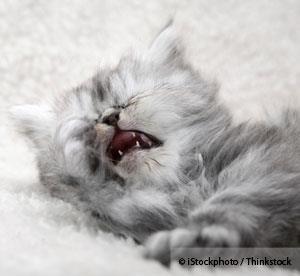For “Mammal Monday”:
________
Allergic Dermatitis: The NEW #1 Reason Dogs Visit Vets, and How to Treat It at Home
Tips for Treating the Top 3 Canine Health Conditions
 “In 2012, the health issue that brought the greatest number of dog owners to the vet’s office was atopic or allergic dermatitis. According to Veterinary Pet Insurance (VPI), for the first time in five years, allergies knocked otitis externa (inflammation of the outer ear and ear canal) out of first place.
“In 2012, the health issue that brought the greatest number of dog owners to the vet’s office was atopic or allergic dermatitis. According to Veterinary Pet Insurance (VPI), for the first time in five years, allergies knocked otitis externa (inflammation of the outer ear and ear canal) out of first place.
Allergic Dermatitis
A dog with allergies should be switched to an anti-inflammatory diet, which means a diet that is very low in grain content and without potatoes. Beneficial additions to the diet include omega-3 fatty acids in conjunction with coconut oil to decrease inflammation and yeast growth throughout the body.
Helpful supplements for allergic dogs include quercetin together with bromelain and papain, diffused eucalyptus oil, and local honey.
Avoid unnecessary vaccines and veterinary drugs, and definitely don’t allow a dog with allergies to be vaccinated during a flare-up.
Use foot soaks, body rinses and frequent baths to control build-up of allergens on your pet’s coat and skin. Avoid shampoos with grains, including oatmeal shampoo.
Vacuum carpets and clean hard floors regularly; wash pet bedding often; use non-toxic cleaners around the house; and consider investing in an air purifier to remove allergens from your dog’s indoor living space.
Otitis Externa (Inflammation of the Ear)
If your dog has a tendency to have problems with her ears, I recommend checking them daily or every other day at a minimum. Wax or other debris left in your dog's ear canal is the foundation for infection.
The goal is to clean your pet’s ears whenever they’re dirty. That may mean they need to be cleaned every day, or less often if they don’t produce much wax and other crud.
If you think your dog might already have an ear infection, it's important to have your vet check him out before you begin a cleaning regimen. Infections often lead to ruptured eardrums, in which case special cleaners and medications are required.
For taking care of healthy canine ears, my favorite cleaning agents include witch hazel, organic apple cider vinegar mixed with purified water (equal parts), hydrogen peroxide, green tea infusion (using cooled tea), or tea tree oil heavily diluted with purified water (do not use for cats).
Never use rubbing alcohol! It can cause burning and irritation, especially if there's inflammation.
You can use a cotton swab to clean the outside ear area, but never use them inside the ear canal. Use cotton balls instead, since they cannot be inserted too far into the ear. Cotton swabs can damage our pet’s eardrums, whereas cotton balls won’t.
The best way to clean the ear canal is to saturate the cotton ball with your cleaning solution and repeatedly swab out the inside of the ear, until you see no residue on the cotton ball.
Taking care of your pet’s years isn’t difficult! Just a few simple steps to keep his ears clean and dry will go far in preventing otitis externa and other ear conditions.
Hot Spots
If your dog develops a hot spot, you’ll need to do two things – treat the wound, and identify the underlying cause.
In preparing to treat a hot spot, you’ll need to remove the hair on, in and around the affected area. If you don’t remove the hair, it will become trapped in the wound by the pus and you’ll have a much harder time healing the hot spot. Also, hair in and around the affected area can create a perfect environment for the wound to get bigger and the infection to get worse.
I recommend you shave the area of the hot spot, and then mark the edges of the lesion with a Sharpie type pen so you can tell if the infection is expanding. If the infection appears to be spreading, you know you’re not treating it effectively at home and you should get your pup to your veterinarian as soon as possible. Some hot spots can result in fever and serious underlying skin problems, so if you see the wound growing rather than improving after a couple of days, it’s time to seek veterinary care.
Once you’ve shaved the area and identified the margins, clip the hair back until you see healthy skin. Then you can begin gently disinfecting the wound with a solution that will remove bacteria.
I recommend using povidone iodine, which is often sold by the brand name Betadine. It’s an organic iodine with has no side effects and does a good job controlling most skin bacteria. Dilute the solution with purified water until it’s the color of iced tea. Apply it to the wound using a soft washcloth or gauze.
In the beginning, while there’s a lot of oozing from the wound, you’ll want to repeat the disinfecting procedure as often as necessary to keep the area clean, dry and pus free.
Your goal in managing your pup’s hot spot is to keep the area clean and dry at all times, so the first couple days you might need to disinfect the wound as often as every two hours.
Depending on the severity of the infection and the amount of pus the wound is producing, disinfecting two times a day should be an absolute minimum. Remember – a consistently clean and dry wound is critical to healing the infection.
After you clean the wound, you can apply a topical solution like colloidal silver, or raw aloe, or a thin layer of manuka honey, which is a raw honey made from the tea tree plant. You can also use a cool chamomile tea bag against the wound to provide a soothing effect.
Don’t use anything with stinging or astringent properties on an open, raw wound. Solutions like vinegar or tea tree oil, while anti-microbial, are really painful when applied to an open, raw wound, so I don’t recommend you use those types of aggressive solutions when you are treating an infected hot spot.
Repeat the disinfecting procedure and application of a light, natural topical soothing gel afterwards until the wound shrinks in size, the infection clears and your pet is no longer bothered by the hot spot.
Finally, insuring your pet leaves the hot spot alone is critical to healing. You’ll probably need to put an E collar on her to prevent her from licking and biting the affected skin.
If your dog continues to re-traumatize the wound, the infection won’t clear up and the hot spot will get bigger.
As an alternative to the E collar, you might be able to manage the wound by applying a light wrap or putting a t-shirt on your pet, as long as you are sure she is leaving the wound alone.”
More at: http://healthypets.mercola.com/sites/healthypets/archive/2013/07/31/pet-health-conditions.aspx
________
Your Kitties Are Masters at Hiding Chronic Pain
“Do You Hear Your Cat’s Silent But Painful Cries for Help?
As most of us who are owned by a cat are well aware, kitties are very skilled at hiding illness and pain. And since there is no specific tool to assess discomfort in cats, we must look to their behavior for signs of a health problem or painful condition.
 To accurately evaluate your cat’s condition, you need to know the difference between stress- or fear-related behavior and behavior that could signal your pet is in pain. Signs of acute pain in cats include changes in posture, activity level, attitude, vocalization, appetite, facial expression and reaction to being touched or handled.
To accurately evaluate your cat’s condition, you need to know the difference between stress- or fear-related behavior and behavior that could signal your pet is in pain. Signs of acute pain in cats include changes in posture, activity level, attitude, vocalization, appetite, facial expression and reaction to being touched or handled.
Chronic pain is also difficult to diagnose in kitties, but is common in conditions like degenerative joint disease and cancer. Again, it’s important to carefully observe all aspects of your pet’s behavior to make an educated guess about whether she’s suffering pain or discomfort.
Because your cat can’t tell you how he feels, ultimately, his level of pain and quality of life are what you and your vet interpret them to be. That’s why it’s so incredibly important to learn to carefully observe your kitty’s behaviors for signs of trouble.
Environmental enrichment is a very important tool in improving the quality of life of cats enduring chronic pain. Plenty of feline-friendly stimuli, along with play and petting sessions are helpful in distracting your pet so she doesn’t focus continuously on her pain.” Complete article at: http://healthypets.mercola.com/sites/healthypets/archive/2013/07/10/diagnose-cat-condition.aspx
_______
On This Day:
First electric traffic signal installed, Aug 5, 1914:
“The world's first electric traffic signal is put into place on the corner of Euclid Avenue and East 105th Street in Cleveland, Ohio, on this day in 1914.

________
Nuclear Test Ban Treaty signed, Aug 5, 1963:
“Representatives of the United States, the Soviet Union, and Great Britain sign the Nuclear Test Ban Treaty, which prohibited the testing of nuclear weapons in outer space, underwater, or in the atmosphere. The treaty was hailed as an important first step toward the control of nuclear weapons.
On August 5, British, American, and Russian representatives signed the Nuclear Test Ban Treaty. France and China were asked to join the agreement but refused.
The Nuclear Test Ban Treaty was a small but significant step toward the control of nuclear weapons. In the years to come, discussions between the United States and the Soviet Union grew to include limits on many nuclear weapons and the elimination of others.”
_______
Yesterday:
Nala, my foster cat, loves to watch TV, especially Animal Planet. She stares so intently, one wonders if she understands what is going on. While we are working in the mornings, I close her up in my bathroom so that she can’t sneak out of the patio door from my living room to the screen porch, which has no screen or roof on it now. She will lay on top of her kitty condo, and watch the little bathroom TV for hours. She often sits in front of the big living room TV, and I hope her future adoptive ‘parents’ will let her do that, too.
Ray and I took down all the old roof framework off the screen porch. Just the walls are holding it up now. It is all ready for the contractors to re-build it properly at the same height as the new front porch extension. They are supposed to be here in the next few days.
![images[2] images[2]](https://blogger.googleusercontent.com/img/b/R29vZ2xl/AVvXsEjpJB1O55l57zRTIzWMkudhayKo2x9GCqG2BYB4P1MV8vLm0DiYt3tGrYZSI10vYY-qXnrkWMYpt80460QBu7iiSopeNEBnSAKu4tyczmdQEhnDwijf7ZqQRSSmGkMU2s3j5QdwwKcqraNI/?imgmax=800)















No comments:
Post a Comment